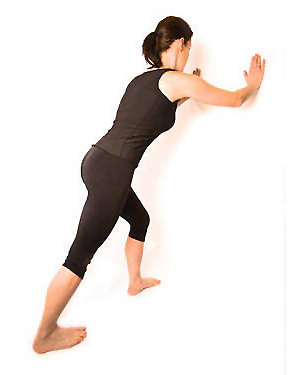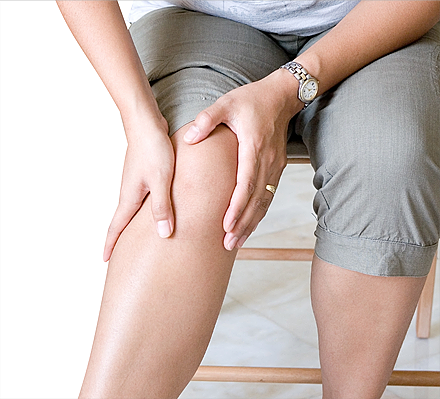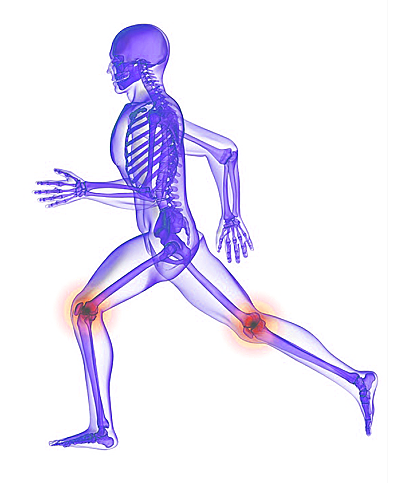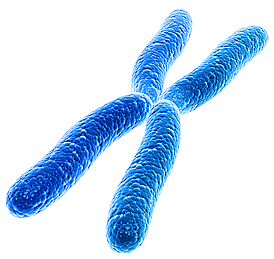Popular Articles
 Total Knee Replacement SurgeryIn This Article
Learn about surgical options for a total knee replacement.
No matter your health, your fitness level, your race, or your gender, at some point or another, it is very likely that you will experience knee pain. When you experience knee pain, when walking or running, the pain itself can be worrisome. Since your knees are always moving and experiencing pressure from your body weight, so when your knee pain appears to be making it more difficult to run or walk, it's easy to worry that something may be seriously wrong with your knees. General Knee Pain and Physical ActivityBefore you concern yourself too much with your knee pain, it's important to remember that knee joints need time to heal like all other tissues in your body. If you are running – or even walking – regularly, your knee joints may simply need a break. It's important not to ignore this pain and continue to run, especially if you have yet to consult a doctor. Sometimes knee pain is nothing more than your body telling you that it needs a rest. Listen to your body if you've been exercising too often and give your joints time to heal. General Causes of Knee Pain When Running |
| Care for Knee Pain |
|
Overuse – Rest is priority number one. Overuse implies that your joints are weak, and maybe more prone to damage. Painkillers are also helpful to ensure that your painful knees don't disrupt your day. You should also consider strengthening your legs to prevent future recurrence. |
|
Temporary Knee Pain – Always listen to your body. Temporary knee pain is rarely the sign of a larger problem, but it can be if you don't keep off of it. If you simply seem to have a bit of knee pain, take a break from running and let your knee joints rest. Ice packs and knee wraps can also be advantageous. |
|
Osteoarthritis – Knees that are suffering from osteoarthritis may need further treatment. Exercises can relieve some of the pressure, but supplements with glucosamine and chondroitin are important for staving off the disease. |
Interestingly, studies have shown that exercising once you feel you've recovered is an important part of preventing both temporary knee pain, overuse injuries, and potentially osteoarthritis, so make sure that you're taking the time to stay active. Consider athletic knee wraps as well, to keep your knee from experiencing further stress and injury when you exercise.
 Workouts to Improve Knee Strength with Osteoarthritis
Workouts to Improve Knee Strength with Osteoarthritis
Supplementation is one of the better ways to treat osteoarthritis. Several nutrients are known to be effective at supplying the joints with minerals and nutrition that it needs to regain its strength and improve its regenerative powers.
But osteoarthritis is a degenerative disease, and when you have knee pain when running, you need to find a way to reduce the pressure you put on the joint each time you go out for a jog.
One of the best ways to do this is with osteoarthritis knee exercises – exercises that will reduce knee pain when walking or when running, and create an environment that puts less pressure on the joints. These include:
Calf Stretch
Calf stretches are designed to prevent injury. But they're also a good way to create additional strength around the knee.
Stand straight facing a wall. While you continue to face a wall, place one leg straight back and keep your foot flat against the ground. Place your other foot in front of you and bend at the knee slowly. With your back foot pressed against the ground, place weight on that leg so that your calf feels like its stretching. Hold for 20 seconds, then repeat with the other leg.
Leg Raise – Lying Down
Another useful leg exercise takes place while lying down. Lay back on something comfortable, like your bed or a couch. Bend one leg and bring it towards you, then take your other leg (keeping it straight) and raise it up to about 30 to 45 degrees above the bed. Hold for 5 to 10 seconds, then repeat with the other leg. Do roughly ten sets of each, depending on the strength level.
Aquatic Exercise
It's highly recommended that you consider aquatic exercise for the more advanced stages of osteoarthritis. When the pain of arthritis keeps you from exercise, the lighter weight in a pool reduces the pressure.
According to research at the Parker Institute by Drs. Else Marie Bartels and Hans Lund, aquatic exercise appears to be beneficial for short term improvements in osteoarthritis pain – an important step for reducing knee pain when walking.
One example looks like you're doing an underwater, "Can-Can." While standing in chest-deep water, lift one knee upwards. Once it's entirely raised, kick your leg out and upwards, using your leg muscles. Bring your leg back down and repeat with your other leg.
Managing Your Knee Pain When Walking and Running
Knee pain when running – and to a lesser extent, knee pain when walking – can be a normal occurrence. While there are some diseases that can cause these conditions, some degree of pain should be expected.
However, because of how important your knees are to movement and how fragile they can be, it's important to manage your pain and make smart decisions about how you handle your knee health.
If it's simply some minor pain from running regularly or mild overuse, try to keep pressure off the knee while it heals. Ice packs and knee braces can be useful as well.
Osteoarthritis takes a bit more management. Osteoarthritis is also known as "degenerative joint disease" because the condition can worsen over time. Strengthening your leg muscles can be a big help. Also, make sure you're taking some type of osteoarthritis supplement to nourish your joints and keep them from degenerating further.
If the condition is more chronic and something more serious, like a tear to a ligament, contact your doctor and see what treatment they recommend. Surgery or physical therapy may be necessary to keep your knee from experiencing further damage.
What Causes Knee Swelling?
"Swelling" is a blanket term to refer to an increase in the size of a part of your body. In the case of knee swelling, most visual swelling is caused by either inflammation (an immune system response that increases the size of your tissues and causes them to redden) or fluid buildup (the fluid that gathers in a joint without draining). When the cause of knee swelling is fluid, it's known as knee effusion or "water in the knee."
Water in the Knee/Knee Effusion
Contrary to popular belief, the fluid that builds up within the knee is not water. However, the type of fluid depends on the problem. For example, a common cause of water in the knee is gout. Gout is caused by high levels of uric acid.
Most knee effusion is caused by the development of a "bursa," or a fluid-filled sac. The sac fills with synovial fluid, which is a fluid designed to keep your joints lubricated.
Other types of knee effusion may be caused by blood buildup. Most often, blood buildup is the result of a specific injury.
For most patients, knee effusion tends to manifest itself in the same way regardless of the cause. That is why proper diagnosis is so important for treatment.
| Common causes of knee effusion: |
|
Arthritis – All forms of arthritis have the potential to cause knee effusion, with osteoarthritis being the most common and rheumatoid arthritis a close second. |
| Trauma – Knees can easily be damaged as a result of trauma. Trauma includes such conditions as ligament injury, meniscus injury, and patellar dislocation. |
| Gout – While gout is most common in the large toe, gout may also occur in the knee and can lead to both knee swelling and a burning sensation. |
| Infection – Many infections create knee effusion as well. Swelling in the knee may be caused by Lyme disease, Tuberculosis, and on rare occasions, gonorrhea. |
| General Stress – Overuse of the knee can also lead to knee swelling, particularly if a great deal of pressure was placed on the knee. |
On rare occasions, knee swelling may be caused by a tumor. There are over a dozen different tumors that lead to swollen knees, including:
- Fibrous cortical defect
- Ewing's sarcoma
- Chondroblastoma
- Osteosarcoma
- Synovial sarcoma
- Osteochondroma
Knee tumors are fairly rare, and one of the least likely medical conditions to affect the knee. However, knee tumors do cause knee effusion, so they are likely to be tested by a doctor to ensure an accurate diagnosis.
How is Knee Effusion Diagnosed?
Generally, a doctor will go through your history and determine how or why the knee effusion occurred. Your personal history will help the physician rule out issues like trauma.
Also, the doctor will discuss your symptoms with you, along with what occurred before and during the knee swelling.
For example, if your knee appeared to simply "give out" on you, it may be an ACL tear. If you often use your knees repetitively while lifting, it may be the result of overuse.
Swollen knees will also be compared to the un-swollen knee to determine an accurate diagnosis. An ultrasound may also be used to diagnose knee effusion causes.
Are There Any Other Symptoms Associated With Knee Swelling?
Swelling in the knees rarely occurs on its own. Usually, it's accompanied by other symptoms that may disrupt your life. These include:
- Knee Pain
- Burning
- Immobility/Stiffness
- Redness
- Popping Noises
- Flexibility Issues
- Trouble Standing
Each of these symptoms is important for both an accurate diagnosis and accurate treatment.
Treating Knee Swelling
The proper treatment for knee swelling depends on the disorder. When the knee is badly injured, or a tumor is present, the knee may require surgery. However, most swollen knees will be treated with one or more of the following:
| Swollen Knee Treatments |
| Bracing – Knees that cause trouble standing or are at risk of re-injury may receive brace or orthotic support. This support will prevent further injury/overuse of the knee and reduce the likelihood of future swelling. |
| Removing Fluid – Because knee swelling tends to cause pain, doctors may decide to remove some of the fluid from within the knee to reduce the pressure on the nerves and potentially improve mobility. However, if the underlying cause of the swollen knee isn't treated, the fluid will likely come back. |
| Injections – Some doctors prefer to inject swollen knees with drugs that provide temporary relief. Both corticosteroids and hyaluronic acid provide some relief from knee joint pain and swelling. |
| Herbal Medicine – Several herbal medicines provide relief from knee pain. The two most common are chondroitin and glucosamine – both of which help nourish and lubricate joints and may be beneficial for those with osteoarthritis. Some herbal medicine enthusiasts also take linden flower and arnica. |
Knee swelling prevention is also possible. Consuming nutrients that improve knee health can be incredibly beneficial for warding off issues like osteoarthritis. Weight loss can help as well, since obesity may lead to pressure on the knees.
It's also important to avoid repetitive motion and respond to your body quickly – if you feel any light pain while don't ignore the pain and reduce pressure on your knee. Responding quickly to your body can help you avoid future injuries.
How to Reduce Swelling in the Knee At Home
In addition to natural treatments, there are a few strategies you can try to reduce knee swelling in your home. These include:
| Home Remedies for Knee Swelling |
| Icing – Icing the knee will not treat any knee swelling issues, but it can reduce inflammation, which should provide some temporary relief from knee pain. |
| Compression – Compression involves putting pressure on the knee with a knee brace. Knee braces may prevent further damage and pressure around the knee, and also warm the knee to reduce inflammation. |
| Elevation – Keeping your knee elevated also has the potential to reduce inflammation. It takes much of the pressure off your knee that occurs when you sit, stand, or lay down. |
| Rest – Simply keeping off of your knee can reduce knee pain when the cause of your knee pain is due to injury or overuse. The severe injury still requires treatment, but rest will prevent further damage. |
| Anti-inflammatory Medicine – Any anti-inflammatory agents can reduce knee swelling and pain. Ginger is one of the most common, as is Boswellia. |
Should your symptoms appear to get worse while on these home remedies, or if you are concerned that your knee pain/knee swelling is not subsiding, it's a good idea to contact a doctor and have them check for a more serious problem.
Cartilage
As the cartilage becomes damaged due to regular wear and tear or brutal injuries, the bone ends start rubbing against each other, causing severe pain.
This leads to restricted mobility of the limbs. Such friction may also affect the synovial fluid acting as a lubricant for the joints to work properly and allowing zero friction.
Time
A total knee replacement (TKR) surgery usually takes less than 3 hours. The orthopedic surgeon examines your knee and replaces the injured cartilage or bone with a pair of plastic-and-metal implants.
With the help of TKR, the normal function of your knee and limbs can be restored. The surgeon even sees to it that the alignment of your knee is properly sustained. After being released, you would be asked to exercise regularly and do rehabilitation to get a full range of motion back in your leg.
The degeneration of the knee is an obvious reason why people resort to total knee replacement procedures. The deterioration of the knee's functionality can be quickly corrected with the help of TKR. An estimated 85% of the people who have undergone TKR have found their implants to last for around 20 years. However, the durability of the implants widely varies between 10-20 years approximately.
Author's bio: The author, John Stuard, is glad to inform her reader base about the importance of total knee replacement and how it helps retain normal activities of an individual.
References
https://www.mayoclinic.com/health/knee-bursitis/DS00954/DSECTION=symptoms
https://www.aafp.org/afp/2000/0415/p2391.html
https://www.ncbi.nlm.nih.gov/pmc/articles/PMC3263744/
https://www.mayoclinic.com/health/knee-pain/ds00555/dsection=symptoms
The knee is a major structure supporting our lower limbs and allowing us mobility.
It is the meeting point for the femur and the shin bone as the two move smoothly together without triggering any friction. The articular cartilage is responsible for triggering a smooth effect as the limbs move. The entire joint holds the ligaments in place and is being covered by the kneecap.





 Knee pain is one of the most common types of pain that both men and women experience in their lifetime. According to the University of Alabama at Birmingham, as many as 2,000,000 patients will seek medical help for knee pain each year.
Knee pain is one of the most common types of pain that both men and women experience in their lifetime. According to the University of Alabama at Birmingham, as many as 2,000,000 patients will seek medical help for knee pain each year.
 This type of arthritis can be caused by a range of different factors, including:
This type of arthritis can be caused by a range of different factors, including: